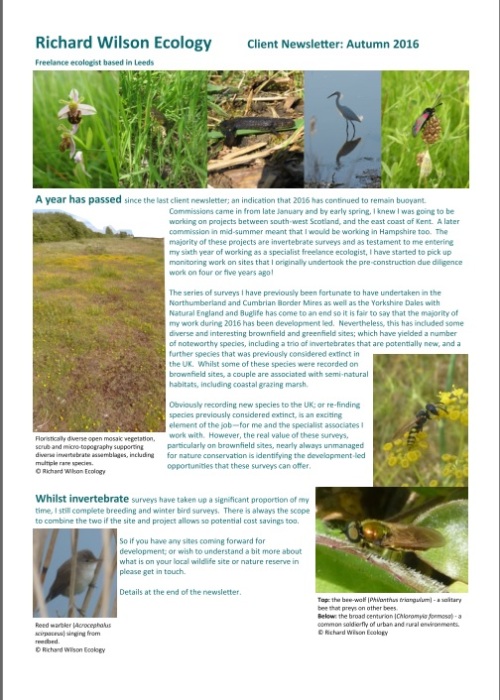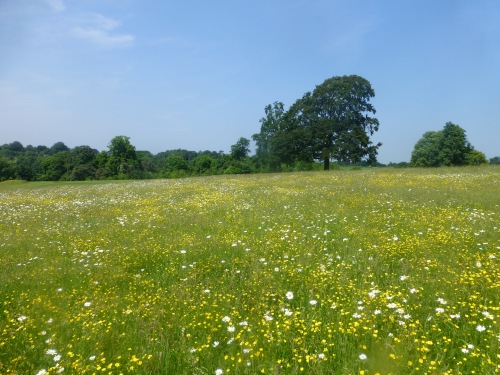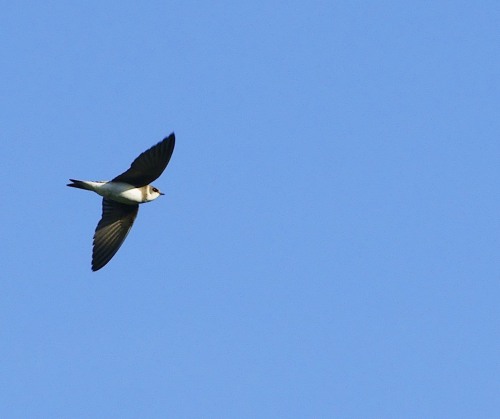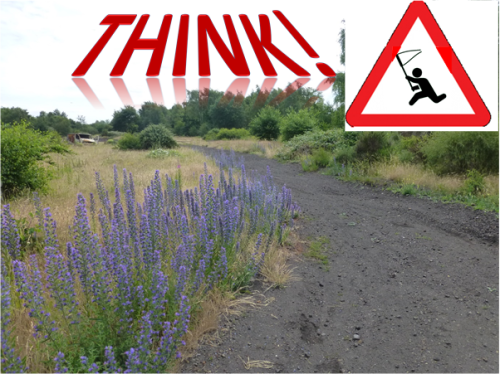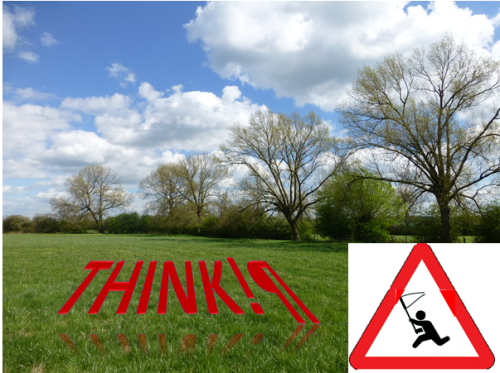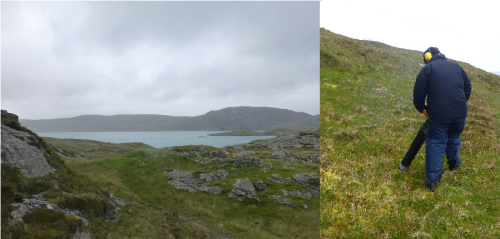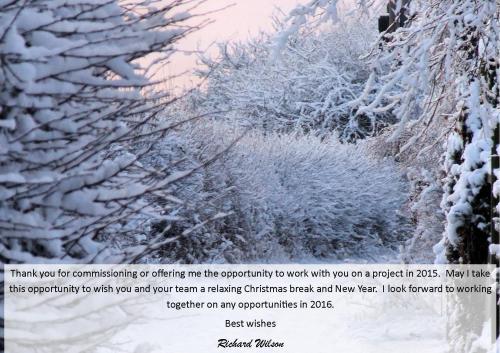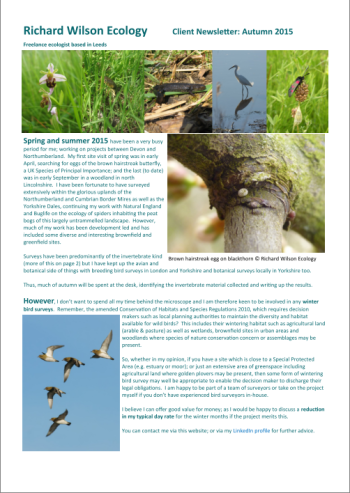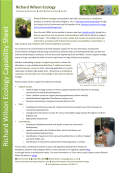Greetings! After a long absence; or a hiatus as others may describe it.
Last year (2017) was an exceptionally busy one with a significant workload taking me as far north as south-west Scotland; as far west as north Wales; as far east as Lincolnshire; and as far south as Hampshire. This year (2018) will see similar journeys and there is plenty already booked in the diary. So a big ‘thank you’ to all my regular and not so regular clients. I will enjoy working with many of you again throughout the spring and summer of 2018.
There have been quite a few highlights in 2017, including working with Calderdale Council at the delightfully-named Cromwell Bottom Nature Reserve, near Brighouse in West Yorkshire undertaking terrestrial invertebrate surveys within old gravel pits subsequently infilled with pulverised fuel ash (PFA) – a waste product of coal-fired powerstations (in this case, the now demolished Elland Powerstation). This typically results in a floristically and structurally diverse habitat mosaic as a consequence of the complex chemistry exhibited by PFA as it weathers. A primary objective of the survey was to inform proposed habitat restoration work being planned to re-wet the site where existing lagoons have gradually silted up; identify enhancement opportunities to re-establish some of the more open biotopes that have gradually succumbed to bramble and birch/ willow invasion and establish the types of invertebrate assemblages present within the nature reserve.
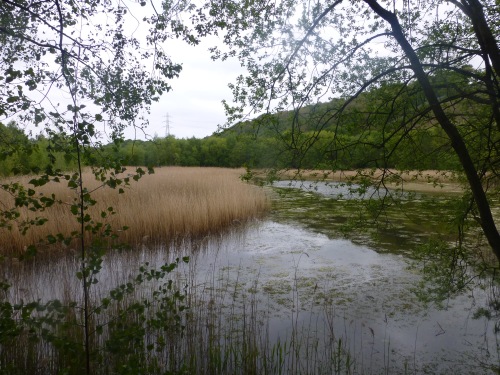
Cromwell Bottom LNR, near Brighouse, West Yorkshire. The invertebrate surveys undertaken in 2017 will inform the proposed habitat management on the site; particularly re-wetting the lagoon seen in this photo.
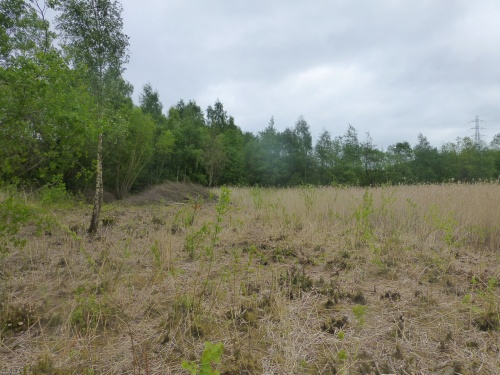
The dry area of the lagoon which is intended to be lowered to increase open water habitats. Transitional habitat such as reed/ willow carr can support an assemblage of specialist invertebrates so the surveys were completed to identify the assemblages present.
A second highlight also involved working on a site influenced by PFA deposition; this time in north Lincolnshire. Three visits at this location yielded a significant number of solitary bees and wasps, estimated to represent just over 10 % of the UK fauna; including several new species for the county and one which is likely to be of regional significance. The overall invertebrate assemblage is of national significance but there are also opportunities here for future proposals to enable appropriate land management that will retain the various interest features of the study site. These features will be considered in the context of the wider landscape characteristics of this part of Lincolnshire, including reflecting statutory sites that support similar habitats.
I was also incredibly fortunate to have the opportunity to undertake a bespoke spider survey for the Leicestershire & Rutland Wildlife Trust at Charnwood Lodge Site of Special Scientific Interest and National Nature Reserve. Historical work in the 1960s and then again in the early 1990s identified the Reserve as being significant for its spider fauna based on early work undertaken by John Crocker and Jon Daws. My surveys, undertaken between March and October aimed to update the Reserve’s species list. A total of 135 species were recorded, adding 24 new species to the Reserve; and two new to Leicestershire (technically vice-county 55); thus bringing the total recorded there to 194 species.
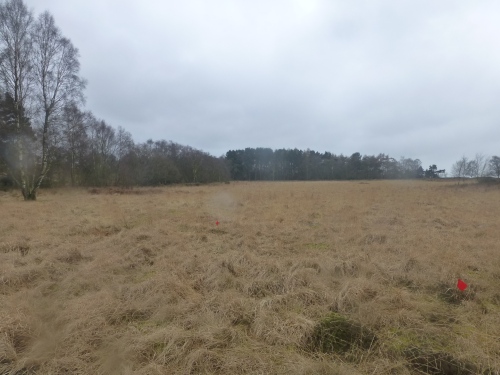
The Rough, Charnwood Lodge NR. An area of wet acid grassland & heath mosaics
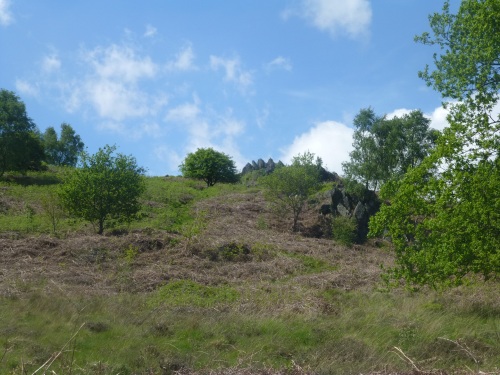
Timberwood Hill, Charnwood Lodge NR. Mosaics of wet heath, acid grassland, scrub & rocky outcrops
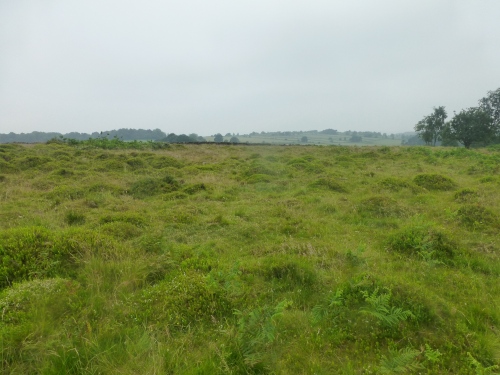
Timberwood Hill, Charnwood Lodge NR. Bilberry heath.
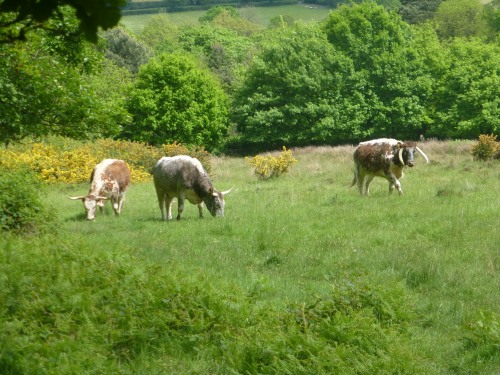
Heatherfield, Charnwood Lodge NR. Long-horn cattle grazing acid grassland with scattered gorse.
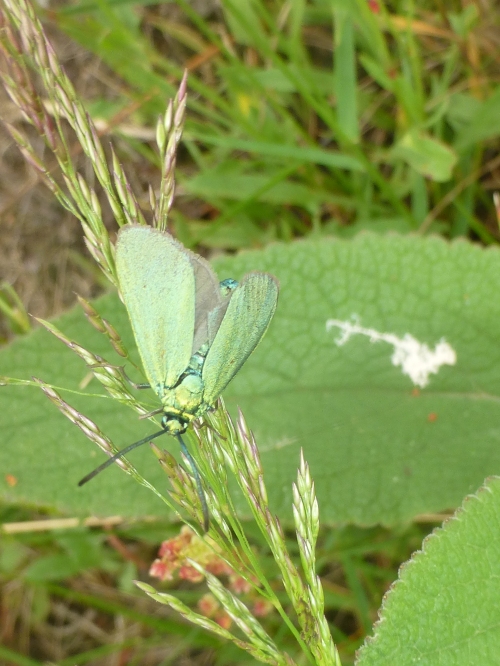
Forester moth (Adscita statices), a Species of Principal Importance, near the ‘Bomb Rocks’, Charnwood Lodge NR
Whilst the majority of my work has been undertaking terrestrial invertebrate surveys, other work has included breeding and wintering bird surveys, Preliminary Ecological Appraisals and other high-level walkover surveys and the occasional more detailed high-level botanical surveys. I continue to work with trusted and experienced specialists in their field, including other entomologists and botanists. Having a reputation for delivering high quality work is important to me, particularly as I am increasingly being commissioned to work with multi-disciplinary teams on more complex sites and thus having a background in large consultancy is an acknowledged benefit to my clients.
Finally, this Blog/ Newsletter marks the end of a long gap in communications as I posted no updates during 2017 – the first instance since I started back in spring 2011. This is entirely due to project work taking up my time and energy; with little realistic opportunity to put the proverbial pen to the proverbial paper. I cannot promise that my Blog outputs will materially change going forward; but I will endeavour to post on an ad hoc basis, as and when time and subject matter permits.
So, if you’re thinking about planning surveys for the 2018 season, do get in touch by the usual way. I am already looking forward to undertaking a spider survey in the New Forest, Hampshire and ongoing monitoring work in the south-east of England.
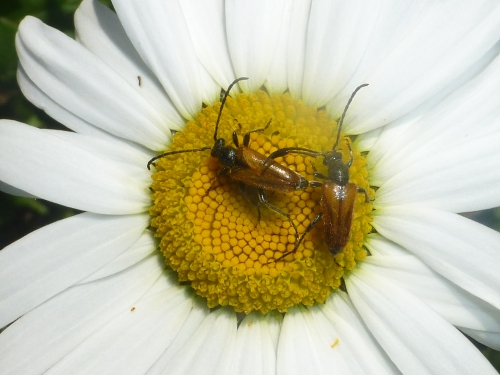
Fairy-ring long-horn beetle (Pseudovadonia livida)
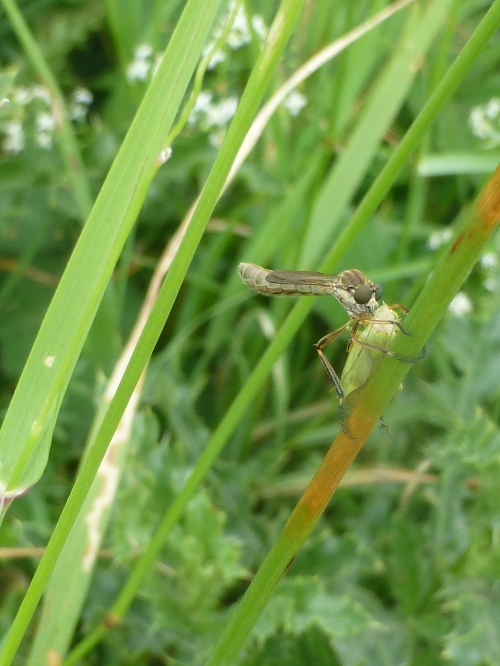
Striped slender-robberfly (Leptogaster cylindrica)
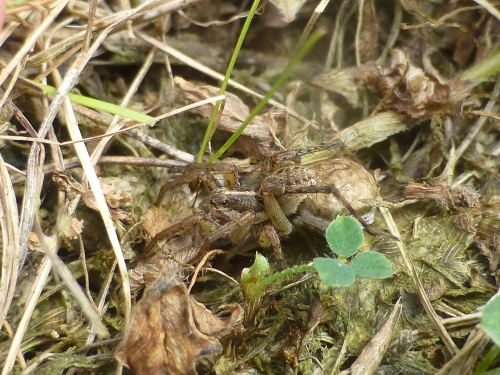
Female wolf-spider (Pardosa sp.) with egg-sac
